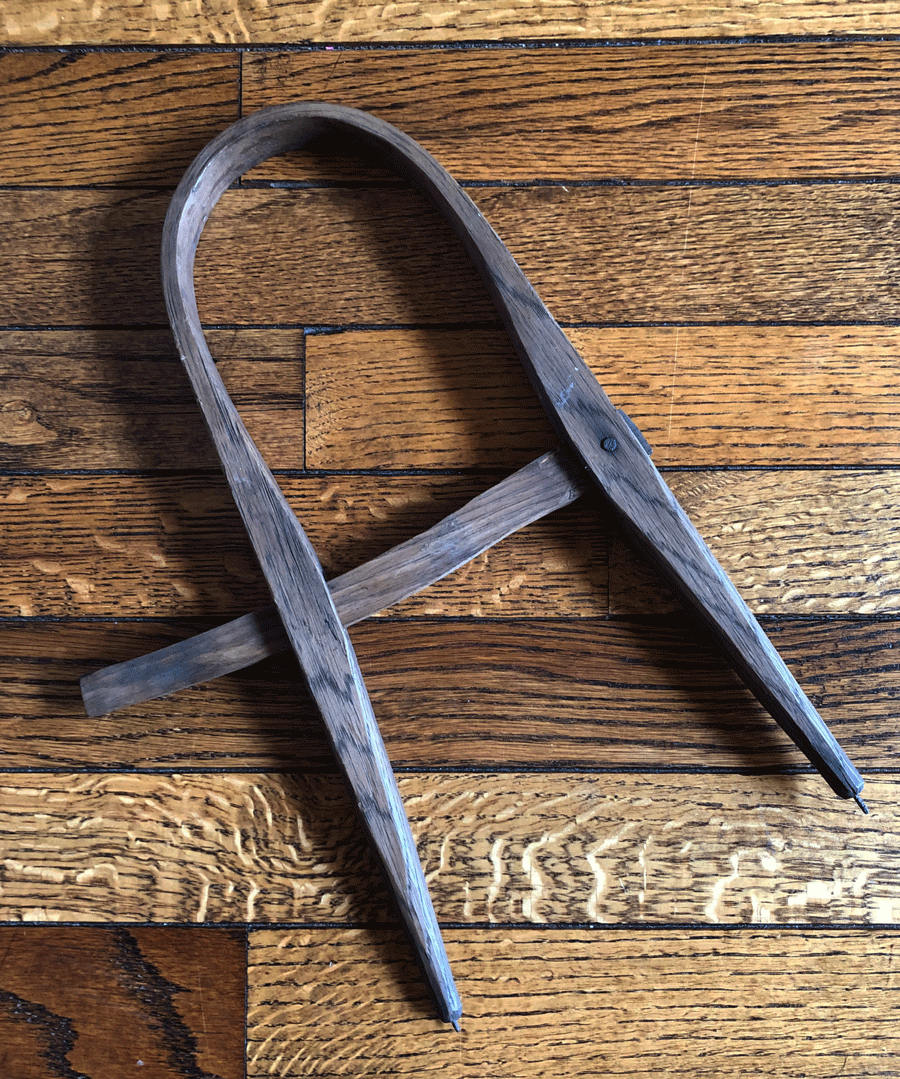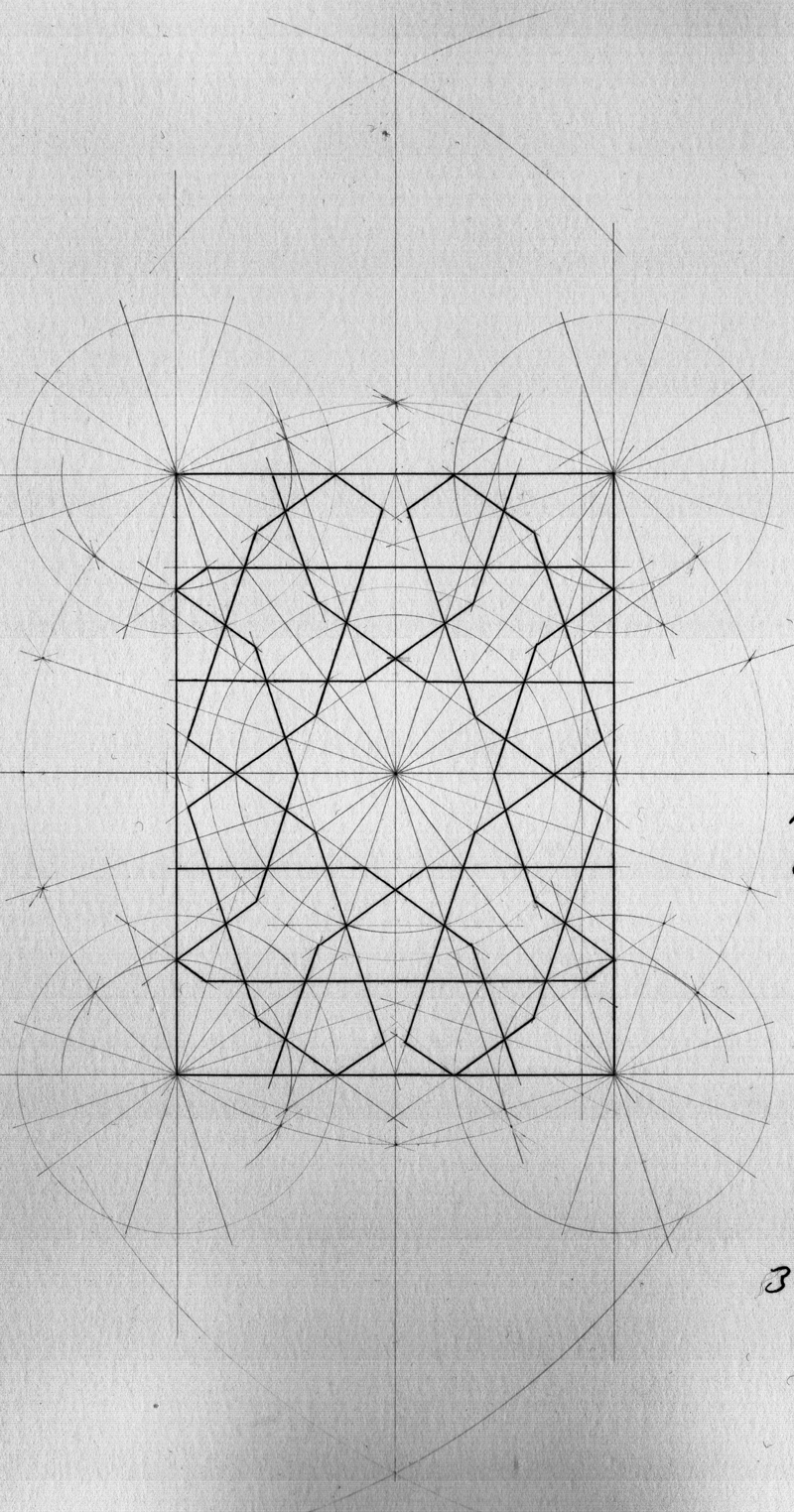Drawing Instruments and Getting Started
This is a page dedicated to the drawing of Islamic Geometric Design. That defines some basic objectives. To draw, you need the basic instruments. This seems a good place to start the story. Much of the introductory information here is based on questions posted to the facebook page “Drawing Islamic Geometric Designs.”
What Do You Need to Draw? 1) A Good Compass
Many drawing problems start with compass problems. You need a stable compass. Many modern production compasses fail this simple test.
The compass is a Very Old Instrument. This one is a classic 12 inch Ash bow compass. (about 1890) (How did they get that name??)
Any stable, well made compass will work, with some qualifications. The ash bow wing compass above would work, for larger patterns. It will also require a huge amount of practice to use effectively. We are after something more practical.
Most of us have two problems that define what we need from our compass.
—Most people will draw these patterns very small. Any but the simplest patterns on A4 paper are small layouts. Patterns are often complex, requiring many drawing steps. Small errors add up and you have a drawing that makes you unhappy.
Very simple compasses can give good results
I use this classic tenfold layout as a test of instruments — and whether I am in practice. This is a smaller layout drawn with a very simple but well made compass.
This compass is over 100 years old and it cost me exactly $2.
Accuracy is acceptable.
(I draw with 4H leads for accuracy, but my layouts are hard to photograph)
A drawing instrument simply needs to be well designed and made, not fancy.
The layout traced and inked.
This is about as good as I can do at this scale with that layout with any instrument
—Many people use modern compasses which are not well designed or built. Compass problems become drawing problems. A well designed, professional quality, compass will help most people improve their drawings significantly. It does not need to be fancy, just good.
Other drawing problems will come from how the compass is used, even if the compass is perfect, but we will deal with that question in later posts.
Will any Modern Compass Work? No.
This is a test of a reasonable expensive “Quick Set” compass. The circle was set to 88 mm, about 3 ½ inch, radius. These two arcs were drawn without lifting or adusting the compass. I had slightly different pressure holding the compass while drawing.
These should be a single arc. We have a problem here.
This is going to be incredibly irritating to use. The rest of this discussion is about avoiding this issue.
I bought and tested about 40 compasses; about half were in production new and half used out of production. Most of the new, currently made compasses had problems. The comments in the following posts are about how to avoid these, and how to find a compass that will work best for A4 to A2 drawings. I am assuming that the user is an average person who was not trained in technical drawing. I will try to limit this discussion to compasses which you will be able to buy without too much searching, assuming access to internet sellers.
Do I need more than one compass?
Yes, you do. For good reasons, a professional set of drawing instruments is at least four compasses. Each has a specific purposes, strengths, and limitations.
There are several instruments shown. Each of these classes will get a dedicated discussion page. In a perfect world, you want all of these.
The dividers, at top, are used for…..Dividing. Also known as the simple compass. Both lines and circles can be divided as their only modern use. These are hairspring dividers, very fast and easy to use. Simple dividers take practice. A video post will show their use. See Post on- Instruments: Simple Compass and Dividers.
The Beam Compass, next down, is always the most accurate type of compass. They were once made for circles from 5mm to 5 meters. For use on A2 and smaller paper, a 16 inch / 400 mm beam is good. this usually means a 7 to 8 inch beam, as shown, with one extension. They are also very useful for easel drawing. They take some practice to use since the hold is very different from a bow compass. See Post on- Instruments: the Beam Compass.
The Bow Compasses, are usually at least a pair. A bow compass has a “natural circle” where it is most stable, accurate, and easy to swing. The 4 inch compass is set to its natural circle in this photo. The steel point will be vertical when it is set on the drawing. The 6 inch compass has a bit more range since it has a knuckle, which can to keep the steel point vertical over a larger range. It is still best for a circle of diameter about equal to its length. See Post on- Instruments: Bow Compasses.
Extension Bars, not shown. I must confess that I don’t ever like exension bars on bow compasses. I advise getting a beam compass. OK, that’s done. Since many people will buy a 6 inch bow compass with an extension bar, I will comment on the best design, and their problems, in the Bow Compass post.
Many people try to work with only a 6 inch compass. You can do it, but it is definitely not the easy way. The 6 inch compass is very awkward for smaller circles. It is inaccurate for large circles. As I mentioned, extension bars for large circles are a source of aggravation. Follow the posts on the types to see what will serve you best.





